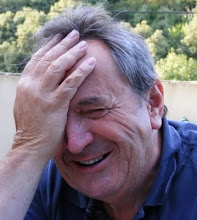All the expressive arts have groups of practitioners who push the boundaries of their art form.
In music the avant garde were experimenting with dissonance and strange time signatures from the beginning of the 20th Century, pushing the boundaries until we arrive at “found” music on one hand, and John Cage’s 4’33”, three movements for any instruments the players choose to bring, as long as they don’t play a single note for the duration of the piece. Music could go no further out. The boundary had been reached. Most composers currently working are back to producing music for an individual or a combination of instruments, including electronic devices, and no matter how inaccessible it may sound to the average MOR fan, it is recognisably part of a continuing tradition.
In English literature we had “found” poems; we had BS Johnson publishing a loose leaf novel that the reader could tackle in any order they chose; but in many ways the boundaries were reached much earlier with “Tristram Shandy” by Sterne, published in the decade from 1759, with its totally black page, its concentration on the hero’s conception and birth, its learned references, and a concentration on the minutiae of domestic life and its mishaps – all foreshadowing Joyce. Joyce could be said to have pushed at the limits with “Finnegans Wake” with its reinvention of the actual language. But there has been a retreat from the extremes and currently esteemed practitioners generally produce accessible work which can be understood and appreciated by almost every literate person.
But the avant garde in the Visual Arts, having reached the limits with “found” pieces such as Duchamp’s “Fountain”, with the dribblings of Jackson Pollock et al, with reductionist sculptures such as Caro’s painted girders, with the use of collage by such as Richard Hamilton, still insist that the boundaries can be pushed further, until anything can be “Art” if the artist says it is. And anyone can be an “Artist” if they say they are. They don’t actually have to produce anything. It has been suggested that all that’s needed is for the “Artist” to think a work.
By that definition I’m the best visual artist in the world . . . . . because I say I am.

No comments:
Post a Comment